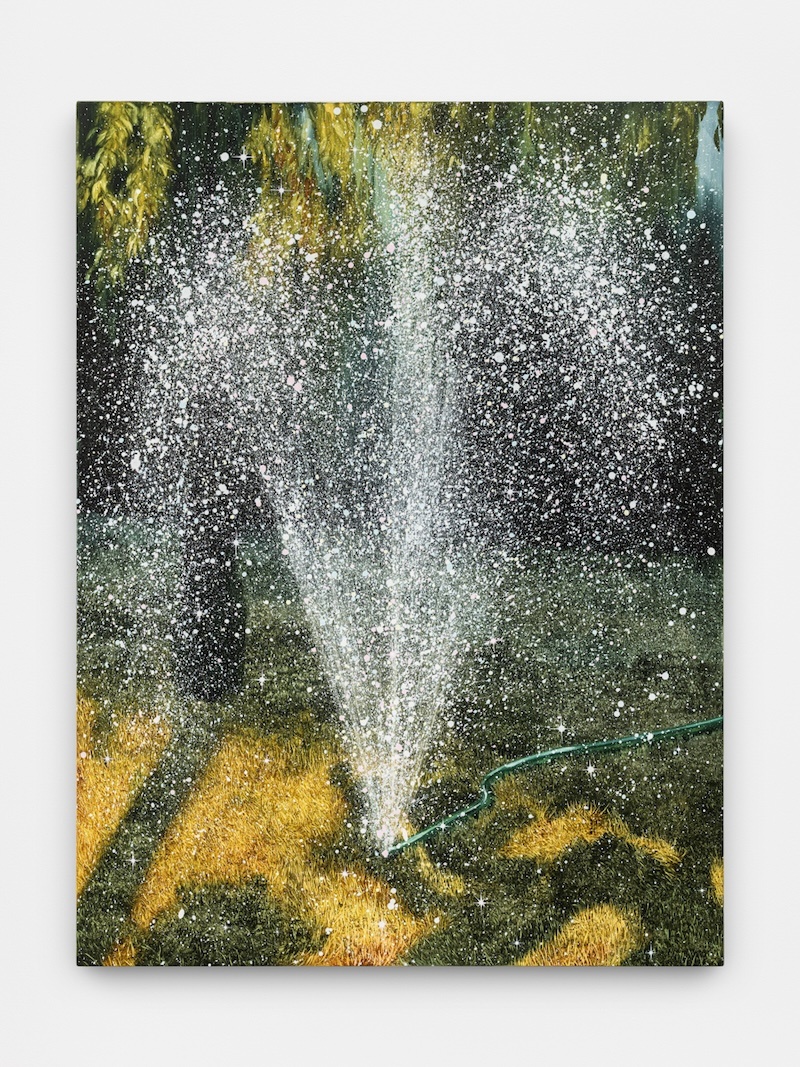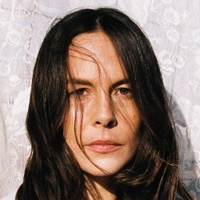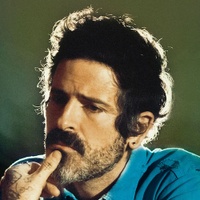On making art no matter what
Prelude
Olivia Hill was born in Hinsdale, Illinois in 1985. She received an MFA from the University of California, Riverside in 2020 and a BFA from the San Francisco Art Institute in California (2006). Exhibitions of Hill’s work include: Strike-Slip at Bel Ami in Los Angeles, California (2022); Storm Before the Calm at Praz-Delavallade in Los Angeles, California (2022); A Fool’s Game Played By Cowards at As It Stands in Los Angeles, California (curated by Kinder, NY with Aria Dean) (2022); A Somewhat Thin Line at In Lieu Gallery in Los Angeles, California (2022); Psycho Geology at Bendix Building in Los Angeles, California (curated by Anna Elise Johnson) (2022); and No Matter What, an MFA thesis exhibition at JOAN in Los Angeles, California (2021). She lives and works between Los Angeles and Yucca Valley, both in California.
Conversation
On making art no matter what
Painter Olivia Hill discusses using technology for inspiration, returning to your childhood home, and finding balance between innovation and consistency.
As told to Claudia Ross, 2389 words.
Tags: Art, Process, Education, Day jobs, Inspiration.
How do you decide when to make a painting? When does a painting feel inevitable?
I think a lot about my childhood instincts to paint and draw, and how at the very earliest stages they were kind of covetous. The urge to make something or to recreate something was to own it or to make it real.
And now it’s often about recreating something in order to know it, to get a sense of the connectedness in things. And that’s a pretty consistent through line in my work even though it takes different iterations. I’m always finding the connectedness between things, and I find those connections in imagery.
That brings me to your original question. How do I identify a painting that I want to make? It’s like I’ve been following this constellation, connecting the dots and finding the similarities between them on a micro and macro scale.
And then through the process of painting, I’m finding other similarities that weren’t immediately apparent to me when I felt the compulsion to make the painting. For instance, for this show [at Bel Ami], I made a painting of an aerial landscape. It’s an aerial image of the California landscape inspired by last year’s super bloom. It was maybe the first time we had the technology to get really vivid images of wildflowers from outer space. So I was like, “I have to paint that. I just need to know more about that.”

Poppies From Space 33°47’03.9’‘N 117°25’17.5’‘W, oil on canvas, 60 inches x 72 inches, 2024
I feel like there’s an interesting tension in your work between fact and fiction, artificial and real.
I’m kind of a science enthusiast. When I read, I read what I guess you would call pop science, pop cosmology, pop physics. That gets me into this state of awe that I like to be in when I’m thinking about what I want to paint. It gets me excited about existence. My version of sketching in a sketchbook is to just look at Google Earth and sort of fly over the planet.
Mostly I start with my own hometown, and that’s why I’ve used California as a backdrop. I like to start with the familiar and then zoom out and look at it as if I’m seeing it objectively, as if I’m someone from another planet looking at our own planet, trying to understand what the humans are up to, trying to look for signs of life.
I always get excited about the way that the landscape looks from that altered point of view. Often it’s very abstract and it’s hard to tell whether you’re looking at something macroscopic or microscopic or what planet we’re looking at, if we’re looking at something ancient or new. Aesthetically, I find it really beautiful.
How do you toggle between looking at images online, scrolling through Google Earth, and painting?
Actually, toggling is a good word for it because I think I go back and forth between those two mediums pretty fluidly. As analog my actual method is, I love digital tools. I’m not very tech-savvy, so I use digital tools in a really clunky way. I think that’s come to define my aesthetic a little bit. I get excited about it, like somebody who’s using a computer for the first time going, “Isn’t this wonderful?”

Picnic Table in Poppy Field, oil on canvas, 60 inches by 48 inches, 2024
I’m curious about your interest in representing California and Los Angeles. Is there a desire to represent California in a way that you feel like hasn’t been represented before?
I actually am interested in the LA simulacra just as much as I am in the real thing. Something that was a big part of my childhood was walking with my dad in the Hollywood Hills and looking at the castles, at people’s version of happiness. The environment they create. There isn’t really a standardized look to LA. It’s a place where you come and you make anything you want. And so I’m interested in the cultural interpretation of LA, too.
If there’s one thing, though, that is very personal to me and my representation of it, it’s the dirt and the mountains. The unglamorous, publicly available side of it. People think of LA as a place where there’s a lot of glamour and you’re going to see celebrities. But my experience of it growing up was more like, “Well, what can we do for free?” And that was usually hiking.

Star Field, oil and acrylic on canvas, 60 inches x 72 inches, 2024
I know you’ve painted the Bronson Batcave a lot, too, which I loved. I hiked there a lot as a kid.
Yeah. I first started painting the LA landscape in grad school. I had to go away from LA and then come back and I went back to my childhood. A lot of the places that I painted at the beginning were places that my dad took me when I was a kid to be like, “This is a pretty weird and wonderful place that we live in.”
How did you handle the transition to and from grad school?
When I went to grad school, it was the first time that I realized that there were all these different ways that people could come into making art. We had visiting artist lectures, and a lot of these professional artists would talk say, “Yeah, I mean, I was studying tech, and then somebody offered me a scholarship.”
That kind of helped me to actually reset my own practice and say, “Okay, let’s pretend like this isn’t a thing that I just do, because it’s what just comes naturally. Let’s pretend like this is a career that I’m trying to pursue. How do I do that?”
After undergrad, I had no interest in going back to school for art. I was really disenchanted by the art world. I thought everybody was kind of a downer, and I didn’t understand how to make a career out of it. So I started working in the film business for a while, and I was at the San Francisco Art Institute, and I sort of smoothly transitioned into just working with film students to doing production design and costumes. I found that people’s drive and energy in the film business was refreshing. I found other artists to be a little apathetic.
I get that.
I went and worked in the movie business for a while. I ended up working full-time on a television show for five years, and I thought, “Maybe this is what I’m going to do because I understand how I get a paycheck.” I lived in Nashville working on the show, and I bought a house there. It was a good time to buy houses. I also bought a house in the high desert in Yucca Valley. I was like, “Well, I am throwing a stone over there. I’m going to come back one day. It’s there for me.”
But after five years, I said, “Enough with this.” I had built myself a studio in my backyard, and I was still painting, and I thought, “I have to get back to this. This is what’s the most fulfilling to me.” And that’s when I applied to grad school, and I only applied to schools that would bring me back to Southern California.

Stone Formation #2, oil and acrylic on canvas, 18 inches by 24 inches, 2024
How was school, once you were there?
I thought going to grad school in my early thirties after having a taste of being a real working stiff was great. I was like, “I’m so ready to learn. I’m ready for critique.” I was ready for the things that grad school wants you to do: to just tear down your practice and forget everything and start from scratch. And I really did that while I was there. For the first year, I hardly made any paintings. I made videos and weird stuff knowing that I would probably come back to painting, but I wanted to have just a different approach to it.
I had to get some motion picture making out of my system after working in the movies. And I thought it gave me better tools to explore things that I wanted to put into my paintings. Artificiality, motion, phenomena. When I was making little videos and stuff, I was making sets and little models. That’s what got me into looking at Google Earth. I realized that Google Earth was a shortcut to looking at the environment as if it was a little model.
That’s fascinating.
And when I was in grad school, I was already thinking in terms of how I would fit this into my practical life. I was a little older than some of the other people in my program, and I needed it to fit into the lifestyle I already had. UCR is a fully funded program, so it didn’t cost anything.
And when I came out of grad school, I was doing the earliest versions of the paintings that I’m doing now. And I was like, “Okay, I think this is an area that this is going to give me the sustained interest for a long time.” And then I came out of grad school during the pandemic, and that gave me a little bit of a buffer.

Sprinkler, oil on canvas, 48 inches x 36 inches, 2024
But then a year later I had my thesis show in LA, and Lee at Bel Ami came to see it, and I already had a baby. I got pregnant during the lockdown. I had a baby with me at my thesis show. Everything happened at once because I suddenly had a six-month-old, Lee offered me my first solo show at Bel Ami, and I got my first teaching job at Chapman. I’ve been doing some assistant work for an artist for years now, and her work started to ramp up, and I didn’t feel like I could say no to anything. But I thought, “I’ve done movie work before. I know how to work 14-hour days.”
That makes sense.
I thought, “I’m just going to say yes to everything right now.” And it was brutal. I was absolutely exhausted. But I wanted to have an art show more than anything in the world. And so I just said, “Let me make this work.” It was sort of limping to the finish line, but it was okay. And that push back then got me into a place where things are a little bit easier. There’s more of a flow now. My daughter’s in school during the day, and then we have a nanny for a couple of hours. All my income might be going towards childcare, but that’s okay because I get to paint all day.
And that’s the dream, just to support what I love doing. I don’t have a lot of overhead with my painting practice, because one of the benefits of having done it all my life is that I can kind of make any space an art-making space. I always built my own canvases, so I know that I can always find a way to do it for free.
My practice is pretty fluid and evolving. I always think that no matter what situation I get into, I’ll find a way to make my art. I think often about somebody who was really influential to my practice, a teacher named Mr. Lynn in high school. He taught a Chinese watercolor class.
He had grown up in China, and he had always loved making art. For a period of his childhood, making art was outlawed, but he found a way to make paintings. He made paintings with soy sauce on tablecloth.
Whoa.
It was sort of gross, but he had a really grown out pinky nail. He would use it as a fountain pen and paint with his fingernail and soy sauce. And I was like, “That’s hardcore.” You really have to make paintings no matter what. There’s always a way.

Play Space, oil and acrylic on canvas, 48 inches x 36 inches, 2024
And that’s when people actually end up innovating in their practice a lot of the time, I think. That necessity pushes people to a place where the work often becomes more compelling.
Necessity is the mother of invention. I’ve always looked at it that way. I’m feeling good about the balance right now between evolution and innovation and consistency in my work. I’ve gone through periods where it’s just all evolution and experimentation all the time, but so much of the discovery is realizing, “Oh, this is not working.” I mean, maybe you can get past the point of really making mistakes, but maybe that’s kind of boring.
Is there something that, as an artist, you haven’t gotten to do yet that you would really like to do?
I always hope that at each stage in my life as an artist, I’m already doing what I want to do. So I always check in with myself all the time and say, “Is this what I want to be doing with my day?” And right now it’s this small scale version of that, but it’s already sort of there. I can imagine that I can fill a much bigger space with this breadth of work. Larger paintings, too.
And then I hope it resonates with people. That’s the most important thing to me. When people catch my drift, that’s the most rewarding thing to me.
Olivia Hill Recommends:
Reading pop physics and cosmology books (Brian Greene, Stephen Hawking)
Taking studio breaks to lie in the sun
Choreographed dance (watching and doing)
Second-hand shopping
Relating situations in life to scenes from Jurassic Park (the first one)
- Name
- Olivia Hill
- Vocation
- visual artist
Some Things
Pagination



